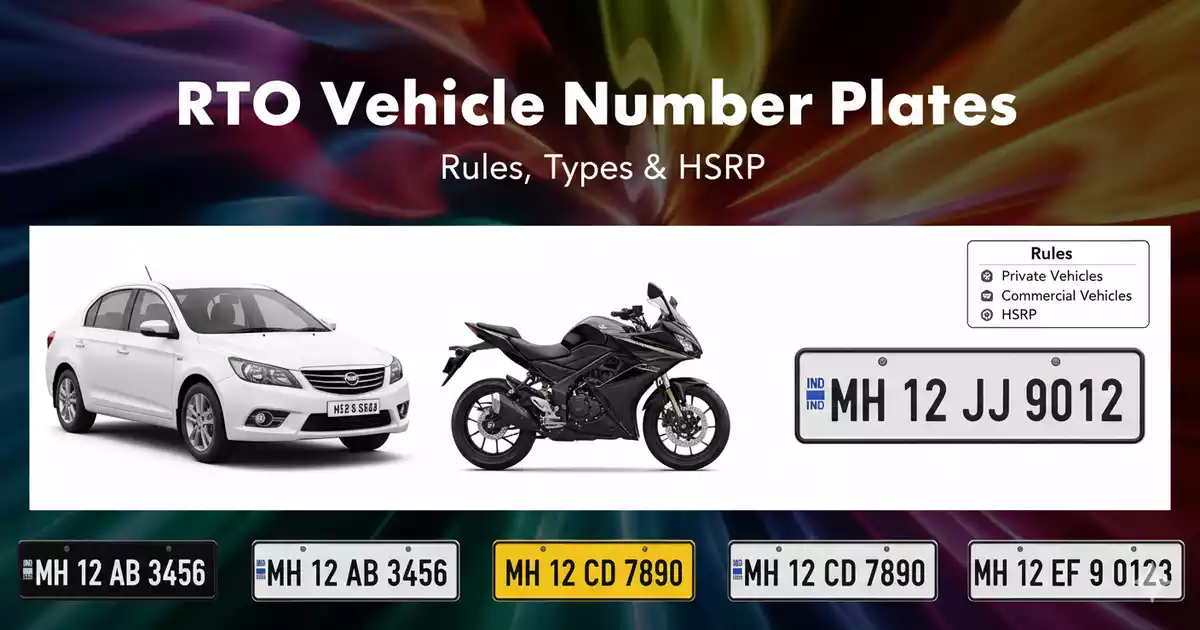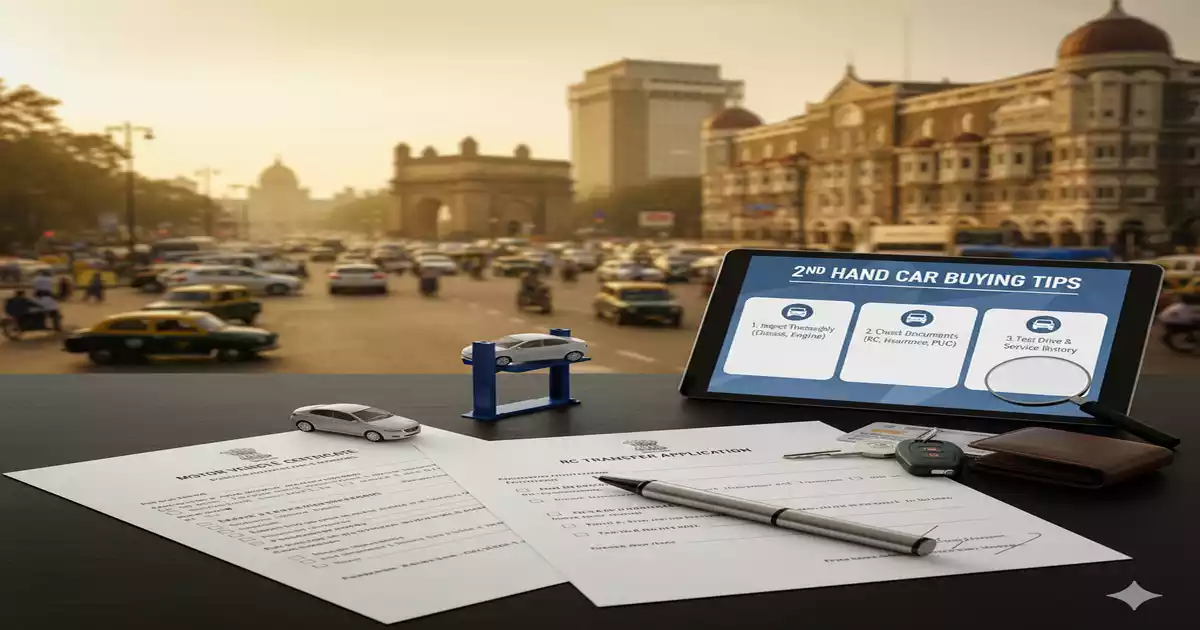RTO Vehicle Number Plates – Rules, Types & High Security Registration Plates (HSRP)
When you see a vehicle on the road, the first thing that stands out is its RTO Vehicle Number Plates. These plates are not just random digits; they are the official identity of every vehicle, registered under the Regional Transport Office (RTO) in India. Number plates are legally mandated, and not following the rules can invite heavy penalties. In recent years, the Indian government has introduced High Security Registration Plates (HSRP) to ensure better security, prevent theft, and standardize registration across states.
In this article, we’ll dive deep into the rules, types, and HSRP requirements for RTO vehicle number plates, and explain everything you need to know as a vehicle owner in India.
1. Importance of Vehicle Number Plates
Number plates serve as a unique identification code for every vehicle. Without them, tracking ownership, taxation, and traffic violations would be impossible. Here’s why they matter:
- Legal Identification – Every vehicle must be registered with an RTO and assigned a unique number plate.
- Ownership Verification – Helps in verifying the legal owner of the vehicle.
- Theft Prevention – Registered numbers help track and recover stolen vehicles.
- Traffic Management – Authorities use number plates for issuing challans, toll collection, and surveillance.
Simply put, a number plate is your vehicle’s passport for the road.
2. General Rules for RTO Vehicle Number Plates
The Ministry of Road Transport and Highways (MoRTH) has laid down strict rules for vehicle number plates in India. Some of the key rules include:
- Font & Size – Number plates must follow a standard font and size for visibility. Fancy fonts are illegal.
- Color Codes – The background and text color of number plates vary depending on vehicle type (we’ll cover this in the next section).
- Placement – Plates must be fixed at both the front and rear of the vehicle.
- No Stickers or Paint – Hand-painted or sticker-based plates are not permitted.
- HSRP Requirement – New and old vehicles are required to install High Security Registration Plates for safety and uniformity.
Violating these rules can attract fines of up to ₹5,000 under the Motor Vehicles Act.
3. Types of Vehicle Number Plates in India
Indian number plates come in different types, each serving a specific purpose. Here’s a breakdown:
a) White Number Plate
- Background: White
- Text Color: Black
- Vehicle Type: Private vehicles (cars, bikes, scooters)
- Purpose: For personal use, not for commercial transport.
b) Yellow Number Plate
- Background: Yellow
- Text Color: Black
- Vehicle Type: Commercial vehicles (taxis, trucks, buses, delivery vans)
- Purpose: Used for transporting goods or passengers for hire.
c) Black Number Plate
- Background: Black
- Text Color: Yellow
- Vehicle Type: Self-drive rental vehicles
- Purpose: Vehicles that can be rented without a driver, e.g., Zoomcar, Revv.
d) Green Number Plate
- Background: Green
- Text Color: White
- Vehicle Type: Electric vehicles (EVs) – both private and commercial
- Purpose: To promote clean energy and differentiate EVs from fuel-based vehicles.
e) Blue Number Plate
- Background: Blue
- Text Color: White
- Vehicle Type: Vehicles belonging to foreign diplomats
- Special Feature: No state code, only a country code & unique number.
f) Red Number Plate
- Background: Red
- Text Color: White
- Vehicle Type: Dealer or temporary registration vehicles
- Purpose: Used before the permanent number is issued by the RTO.
4. What is HSRP (High Security Registration Plate)?
The High Security Registration Plate (HSRP) is a government-mandated, tamper-proof license plate designed to improve vehicle security. It comes with several features that make it different from ordinary plates:
- Made of Aluminum – Strong and long-lasting material.
- Laser-etched 10-digit PIN – Unique code linked to the vehicle and owner.
- Non-removable Snap Locks – Prevents plate theft or tampering.
- Reflective Sheet – Improves night visibility.
- Chromium-based Ashoka Chakra hologram – Ensures authenticity.
HSRP is not just a number plate—it’s a security upgrade for your vehicle.
5. Why HSRP is Mandatory
The government made HSRP compulsory for all vehicles because of:
- Theft Prevention – Tamper-proof design reduces the risk of stolen plates being misused.
- Standardization – Uniform format across India.
- Digital Record – Each HSRP is linked to a central database, making tracking easier.
- Traffic Monitoring – Helps authorities in surveillance and issuing challans through automated systems.
- Safety Compliance – Reflective material ensures better visibility during night driving.
Failure to install an HSRP can lead to fines of ₹5,000 for four-wheelers and ₹1,000 for two-wheelers.
6. Process to Get HSRP Installed
Getting an HSRP is now easier with online and offline options. Here’s how you can do it:
- Online Application – Visit the official state transport department website or authorized HSRP vendor portal.
- Enter Vehicle Details – Fill in your registration number, chassis number, and owner information.
- Book Appointment – Select the RTO or dealer center where the plate will be installed.
- Payment – Charges usually range between ₹400 – ₹1,100, depending on the vehicle type.
- Installation – Plates are fixed with snap locks, and a color-coded sticker is placed on the windshield.
7. Color-coded Stickers for Vehicles
Along with HSRP, the government has also made color-coded stickers mandatory:
- Orange Sticker – For petrol and CNG vehicles.
- Blue Sticker – For diesel vehicles.
- Green Sticker – For electric vehicles.
These stickers are placed on the windscreen for easy identification.
8. Penalties for Non-compliance
Driving without a valid RTO-approved number plate or HSRP can attract heavy penalties under the Motor Vehicles Act, 2019.
- First Offense Fine – ₹5,000
- Repeat Offense Fine – ₹10,000
- Vehicle Seizure – In extreme cases, vehicles may be impounded.
Authorities have become stricter, especially in metro cities, where traffic police regularly check for HSRP compliance.
9. Benefits of Following RTO Number Plate Rules
Following the rules is not just about avoiding fines—it also ensures safety and convenience:
- Legal Security – Your vehicle is officially recognized.
- Reduced Theft Risk – Plates cannot be easily duplicated.
- Better Resale Value – Buyers prefer vehicles with valid registration plates.
- Convenient Insurance Claims – Insurance companies require proper registration proof.
- Support for Smart Traffic Systems – Automated tolls, e-challans, and traffic monitoring rely on standard plates.
10. Future of Number Plates in India
India is moving toward a more digitally connected transport system. In the future, we may see:
- Smart Plates with GPS chips – To track stolen vehicles.
- Integration with Fastag – Seamless toll and tax payments.
- Stricter Enforcement – Automated cameras detecting violators.
- Push for EV Number Plates – More green plates as electric vehicles rise.
Clearly, number plates are evolving into smart digital identities for vehicles.
Conclusion
RTO vehicle number plates are far more than just metal tags—they are the legal identity of your vehicle. From white plates for private cars to green ones for EVs, each color has a meaning. With the introduction of High Security Registration Plates (HSRP), India has taken a big step toward safer, standardized, and digital vehicle registration.
As a responsible vehicle owner, it’s important to follow these rules, not just to avoid fines, but also for your own safety, security, and convenience.
FAQs
1. Is HSRP mandatory for old vehicles?
Yes, the government has made HSRP mandatory for both new and old vehicles.
2. How much does an HSRP cost?
The cost ranges from ₹400 to ₹1,100, depending on vehicle type and state.
3. Can I buy HSRP from any shop?
No, only RTO-approved dealers and authorized vendors can issue HSRP.
4. What happens if I don’t install HSRP?
You may face fines up to ₹5,000 and even risk vehicle seizure in some cases.
5. Do electric vehicles need HSRP too?
Yes, EVs must also install HSRP along with a green number plate.


